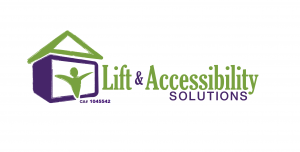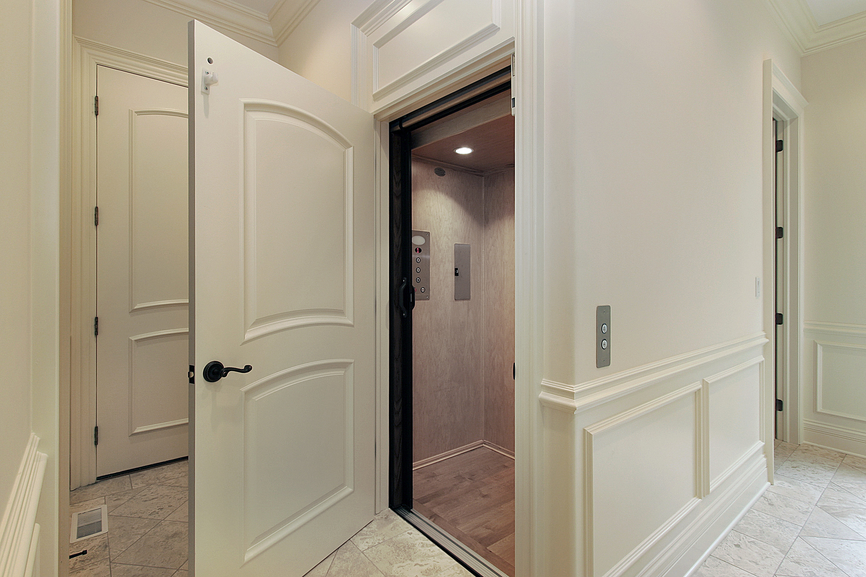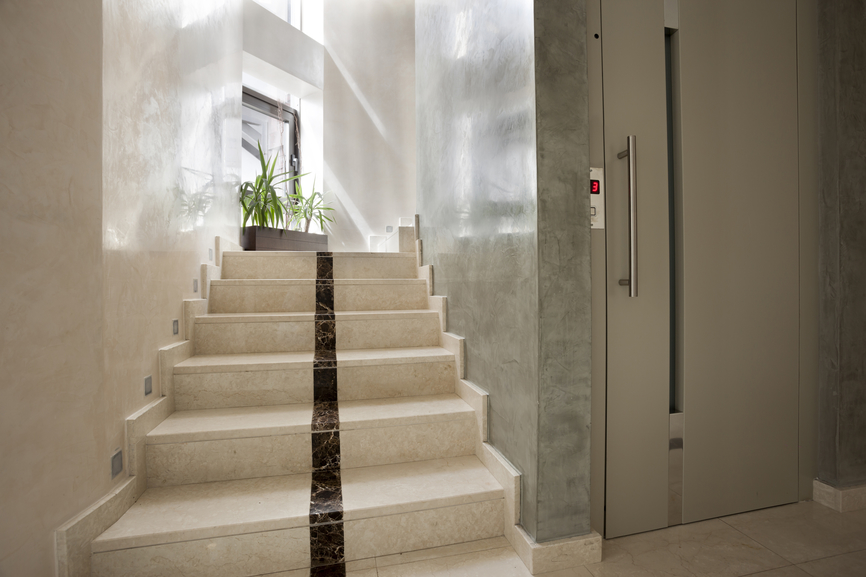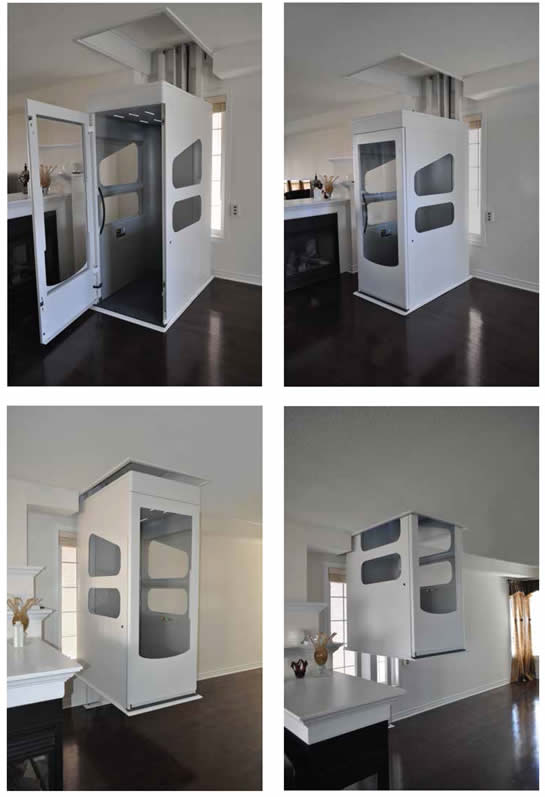20 Jun / 2015
The Dangers of Stairs
Stairs present a considerable scaling danger as we age. The older we get, the riskier stairs become. There are plenty of statistics about falling on stairs, but the authorities whose statistics matter are the National Safety Board and the National Bureau of Labor Statistics. According to them, fatalities from falling rank number two in deaths at the workplace. Their bodies are in better conditions to recover from a fall. Falls have either placed number one or number two in deaths at the workplace for the last 40 years.
When people take the stairs, they do not stop to consider the dangers of stairs. They have muscle memory trained in their legs to be able to ascend or descend a set a stairs without having to pause and think.
There are many causes of stair-related injury, but they all have one result: people fall. Falling is the result of one of two conditions:
- Unsafe Acts
- Unsafe Conditions
The majority of falls are because of unsafe acts. That is not to say elderly people are reckless. They move slower. Their wisdom in their old age might have taught them a thing or two about the dangers of stairs and the need to be careful. Among the elderly, unsafe conditions are much more likely than unsafe acts, like talking on a cellphone or carrying a heavy load down stairs.
What conditions make the elderly prone to falling accidents? Poorly built staircases, a grandmother tripping over a skirt tail she is wearing, or a grandfather with untied shoes, to name a few.
Poorly built staircases can mean several things, from a rickety or weak set of stairs, stairs that are too steep, or lack of decent hand railings. The safest sets of stairs are those where the rise is short, and the tread is wide. More injuries occur on steep stairs with a misjudged step than on those that are broad and flat.
Unsafe acts include carrying things upstairs and mental distractions, like a cell phone, watch, or even talking. If you carry things upstairs, make sure you can have at least one hand on the handrail. Extra precaution needs to be taken when traveling on stairs where you know the conditions are unsafe, such as wet or ice porch steps in the winter.
Using stairway safety, like using as much of the stair tread and hand rails, only takes a small change in our daily behavior. The risks are real, and in many elderly cases, the result is fatal. Minor changes and a shift in your realization of the dangers of stairs might save your life or the lives of our loved ones.someday.
11 Jun / 2015
Home Elevator Sales Reach New Heights
In the 2002 movie “Panic Room”, our main character played by Jodie Foster and her daughter (a yet unknown Kristen Stewart) moved into a posh building that had three stories and featured not only the titular panic room, but also an elevator, as the previous owner was disabled. While the elevator was not essential to the story, it was highlighted as an option that made the house so “decadent”. The idea of an elevator in your home has always seemed like something that only rich people with mansions would choose.
Now, thirteen years later, home elevators are becoming more popular than ever, especially in places such as Southern California. A report released by the National Association of Home Builders shows that nearly 25% of new home buyers rate a home elevator as a desired or essential part of the house. Back in 2002 that figure was only 8%. Why the change? There are several factors driving this trend, but mostly it seems to be that more homeowners are planning ahead for when traversing stairs will become too much of a hassle. Many new buyers are planning on “aging in place” and want to take care of installations and renovations that will assist them in old age while they are still able to afford it.
One of the other reasons for the surge in elevator installations is that the cost is becoming relatively lower. For a typical two story lift, it can run between $21,000 and $28,000, not including permits. This is also to install an elevator for a new home. To put one in an existing home can run upwards of $125,000. Fortunately, however, new technology in pneumatic tube style elevators is drastically reducing the cost, making an installation worth only a few grand. These aren’t as capable of cable-style elevators, but they can get the job done quickly and efficiently if all you’re looking for is to transport one or two people with minimal cargo.
To cater to this new trend, many builders and designers are starting to incorporate elevators into their floor plans so as to attract this new wave of buyers. Elevators are becoming customizable to fit better with the overall look and feel of a home. Wood panel lifts are used for more traditional style houses whereas glass window elevators are becoming more popular, due in part to their anti-claustrophobic feel.
As far as market trends go, this one seems to be one of the more practical options. As the population grows older, demand for elevators will only increase, meaning that we may see a day where the majority of homes will come equipped with a lift.
04 Jun / 2015
Liftoff: Finding the Right Lift For Your Home
For many people, especially the infirm or the elderly, getting around the house can be difficult. This can be further exacerbated in multi-story buildings, as climbing and descending a flight of stairs can be a risky proposition at best.
Fortunately, technology today has made in-home lifts affordable and practical to meet whatever needs you have. There are three types of lifts you can install in your house: a stair lift, a wheelchair lift, and a personal elevator. While each has its benefits, it’s important that you find the right fit and the right lift for your home.
Stair Lift
A stair lift is a seat that follows a track along your staircase. It is relatively inexpensive and allows the user to navigate easily from one floor to the next. A stair lift can be battery operated, which is useful if there is a power outage, or it can run off of the home’s grid. A stair lift is ideal for those who have good mobility already but just need something for traversing the stairs. Anyone with a cane or perhaps joint issues can benefit from a stair lift. If a person needs a wheelchair or a caregiver to accompany them, this type of lift is not ideal as they are usually only rated for one person, and carrying a wheelchair can be cumbersome or even impossible in some cases. Stair lifts can fit most staircases, and usually they are installed in separate pieces for multi-level stairs.
Wheelchair Lift
For anyone who requires the use of a wheelchair, this is an ideal type of lift. While it does require more planning and can cost much more than a stair lift, it does provide the necessary mobility for those who can’t walk by themselves. Typically a wheelchair lift is a mechanical device that raises and lowers between floors. It’s not as expensive as an elevator, but it does require more labor to install than a stair lift. If the user needs a caregiver to accompany them, however, a wheelchair lift may not be the right solution, as they are usually only rated for one passenger.
Elevator
For those who need a care provider to accompany them or who need to transport bulky items between floors regularly, an in-home elevator may be the best solution. While elevators typically are the most expensive and labor-intensive option, there are new types of lifts on the market that drastically reduce the time and cost to install. Pneumatic tube elevators are a single piece that can be easily installed and use air pressure to lift and lower passengers. Typically these are not rated for more than two people, and they can be an affordable solution to provide mobility.
No matter what your limitations, there are solutions out there to help you regain your independence. While these options may be a significant commitment, the ability to continue living your full life free of restraint is well worth the effort. Additionally, in many cases your insurance provider can assist with the cost of installing any mobility solution system. Here at Lift and Accessibility Solutions, we’ll work with you to make sure that all your needs are met. Limited mobility shouldn’t limit your quality of life.
25 May / 2015
Stair Lift San Francisco, CA Installation
Hello, my name is Paul Harlin with Lift and Accessibility Solutions in Santa Rosa, CA.
I’m here at a home in San Francisco that has a rather challenging set of stairs to their front door – 44 steps. We installed this stair lift. It is a two rail stair lift that stops at the landing but allows them to bring themselves and groceries up the stairs comfortably and safely. If you have any questions about our stair lifts, please contact us at the contact information below.
11 May / 2015
Residential Elevator That Floats on Air?
In 1852, Elisha Otis invented what’s known as the “safety elevator”. A metallic compartment that raised and lowered via cables, but with an emergency stopping device in case those cables broke. As a result, elevators became widely available, and construction took off, literally, into the skies.
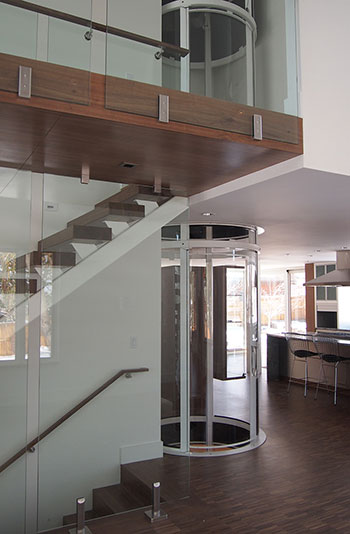 Since the invention of the elevator, moving people and supplies up and down tall buildings has been a breeze. While typically lifts are limited to commercial or industrial buildings, there are some reasons to have one installed at home. Elderly or people with limited mobility may require an elevator in their house lest they be confined to the bottom floor.
Since the invention of the elevator, moving people and supplies up and down tall buildings has been a breeze. While typically lifts are limited to commercial or industrial buildings, there are some reasons to have one installed at home. Elderly or people with limited mobility may require an elevator in their house lest they be confined to the bottom floor.
Traditionally, home elevators have been a costly mess, and as a result they are few and far between in most residences. However, an Argentinian designed lift hopes to fix that problem and allow for elevators wherever they’re needed.
The Residential Pneumatic Vacuum Elevator is designed with basic physics in mind. Instead of cables and a pulley system, the lift is operated solely via air. This is similar to the old pneumatic mail tube device used at the turn of the century. Because the car is moved with air, it eliminates the need for pulleys or counterweights, thus reducing the size and complexity of the elevator considerably. It’s made of aluminum and polycarbonate and is entirely self-contained, so installation is a snap.
In addition to the smooth transition between floors, the RPVE has a safety mechanism that locks the car onto the floor it’s at in case of a power outage. Also, while it may seem precarious only to be riding the air, the lift is rated to carry as much as 450 pounds. The company that makes them has already installed over 300 with no major issues and hopes to continue expanding into new markets.
With the affordability and benefits of this device, it’s not too hard to assume that bigger and better versions will be developed, so that one day commercial elevators could use similar systems, thus reducing building costs and allowing for elevators everywhere. Someday in the near future, everyone could be riding around in a pneumatic device. What a glorious age in which we live.
28 Apr / 2015
Guide to Buying a Stair Lift
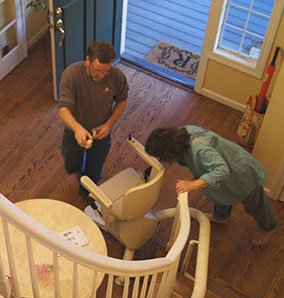 As we grow older, mobility becomes more and more of an issue. Creaky joints, lack of energy, and weaker muscles all conspire against the elderly and make something as easy as climbing the stairs a monumental chore. Luckily, we live in an age where the less mobile aren’t confined to the bottom floors of their homes. We live in an age of stair lifts, which enable those with moving difficulties to scale flights of stairs with ease.
As we grow older, mobility becomes more and more of an issue. Creaky joints, lack of energy, and weaker muscles all conspire against the elderly and make something as easy as climbing the stairs a monumental chore. Luckily, we live in an age where the less mobile aren’t confined to the bottom floors of their homes. We live in an age of stair lifts, which enable those with moving difficulties to scale flights of stairs with ease.
While stair lifts are certainly a boon to the elderly or infirm, there are some things you need to watch out for in order to make sure that the lift you get is right for your needs. There are multiple stair lift companies out there, so here’s how you can separate the best from the rest.
- What kind of stair lift do I need?
There are two types of lifts: straight and curved. If your stairway bends at an angle, you would most likely need two lifts with a landing spot to transfer from one to the next. Additionally, there are standing and sitting lifts, ones with fold down seats, footrests, swivel seats, etc. There are numerous features that come with stair lifts, so it’s important to figure out what type of features you want or require, and find a model that best fits that. Most come with a kill switch for emergencies, and for homes with multiple users, you should get one with a call button, just in case the seat is on the other side of the stairs.
- What power options do I require?
There are battery operated, and AC operated lifts. Batteries typically need to be changed after a year and require recharging on a regular basis. While they can be handy in case of a power outage, they also can be more work. AC Lifts run from your home’s electricity, so you don’t have to worry about as much maintenance.
- What installation requirements are there?
Ideally, you would have a consultant come out and figure out what your options are, depending on the type of stairway you have. The lift must be installed along the wall and usually includes brackets that go to the floor. If there are doorways on either side of the stairwell or carpeting, these may need to be removed or adjusted accordingly. As for power, if you do choose an AC lift, the cord is typically installed along the track so it will be out of the way.
- What happens if something goes wrong?
It’s always best to get a lift from a certified dealer who is locally based. Buying one online may be cheaper, but it could cost you in the long run if they don’t have local service agents to assist you in the event of a malfunction or problem. Typically lifts come with a two-year warranty. Longer warranties are available, but they usually only cover motors and gearboxes, since these parts last longer. As for service warranties, those are usually provided by the installer. If you can find a supplier who also does the installation, then that would be ideal. Lift and Accessibility Solutions offers installation on all our products.
- How much will it cost?
Pricing will vary depending on a wide range of factors. Size and length of stairway, model of lift, features, installation requirements, etc. Usually, insurance doesn’t cover the installation of a stair lift, as it is technically a home renovation. However, some plans do cover it under certain circumstances. Regardless, talking with a customer service representative will give you a better understanding of all of the costs required to getting your stair lift installed.
Don’t let limited mobility keep you from living an active life. Get a FREE e-book “14 Things You Must Know Before Buying a Stairlift”.
21 Apr / 2015
Personal Home Elevator Safety Features
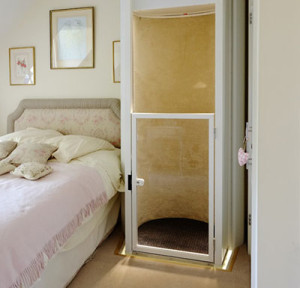 Whether you’re looking to install a home elevator for increased functionality or to boost the value of your home, safety is always our top priority. When you rely on the Stiltz model of in-home elevators, you are gaining a safe addition to your home. In this post, you will learn about the many systems in place to keep you and your family safe when an elevator is being built and used in your home.
Whether you’re looking to install a home elevator for increased functionality or to boost the value of your home, safety is always our top priority. When you rely on the Stiltz model of in-home elevators, you are gaining a safe addition to your home. In this post, you will learn about the many systems in place to keep you and your family safe when an elevator is being built and used in your home.
In America, every Stiltz home elevator comes with a door. The door is either a half-height or full-height door. This door will not open until the elevator comes to a complete stop either at the top or bottom floor. Additionally when the elevator is built, a hole will need to be cut into the top floor. A safety lid will plug the floor upstairs keeping everyone safe.
One safety feature that can protect your family and even your pets is the safety sensor pan. Located on the top and bottom of the lift, this sensor will identify if an object has obstructed the elevator’s path. If something is in the way, the elevator will halt its movement and not resume in the direction of the obstruction until it is removed whether that’s a housecat or some object like a chair.
The Stiltz home elevator has a safety feature that also determines if the weight limit is exceeded. The Stiltz Duo Lift can carry one or two passengers for a total weight of 375 pounds while the Trio can carry up to three passengers for a total weight of 484 pounds. To keep operation completely safe, the elevator is equipped with a limit sensor that determines if the weight is exceeded. If it is, the elevator will not run until a safe weight limit has been reached.
Other safety features of the home elevator include:
- Out of balance sensor that will prevent the lift from running if for any reason it is out of balance.
- In the unlikely event either steel cable in the unique drive system breaks, every elevator is equipped with a fall arrest mechanism that will prevent the elevator falling.
- If the lift travels faster than it is supposed to, your overspeed sensor will return it to safety.
- If a power outage occurs, the lift is equipped with a backup battery.
If you have any questions about the Stiltz home elevator, please contact us today!
14 Apr / 2015
Five Benefits Of A Home Elevator
Do you know that until fairly recently home elevators were a luxury item for a select few? As prices of residential elevators are more affordable and technology has improved installing one at home has become quite popular across the country. People install elevators at home for numerous reasons, but these five benefits are universal to everyone interested.
- Increases the Value of Your Home
For many people, installing a home elevator is an added benefit when reselling their property. Many prospective buyers are attracted to homes with elevators making it a profitable investment for homeowners. These buyers may be interested in future mobility or have a family member in need of the elevator. Regardless of the explicit reason, having one can increase your home’s desirability and equity.
- Improve Mobility
Does anyone really enjoy carrying heavy objects up and down stairs? With a home elevator, once tiresome chores are made immediately easier. For others, climbing the stairs can be a challenging activity. By installing an elevator in your home, people confined to wheelchairs or the elderly will have no trouble accessing the higher floors. Not only is it easier to get up and down, a home elevator makes doing errands and conveying objects simpler and more efficient.
- Boost Space Efficient
When compared to a stairwell, elevators take up much less space. Homeowners who decide to make the investment in a home elevator are able to increase the useable square footage of their home providing more options as well as increasing the resale value. The elevator shaft only takes up a portion of the size of a staircase and if maximizing space is your top priority, elevators can be installed on the outside of the home providing more entry points.
- Demonstrate Style
Since residential elevators are becoming increasingly affordable and available, many homeowners are looking to them to add both a unique look to their property and increase its functionality. It could help your home set a new trend in your neighborhood by being the first to install an elevator.
- Improve Safety
One of the most common ways people are hurt in the homes is from the staircase. A home elevator not only protects young children and adults who are frailer, it can help everyone stay safer. There is virtually no risk to riding your residential elevator as compared to running up and down the stairs.
We hope these 5 benefits to installing a home elevator have helped you. Do you have any question? Please contact us today!
21 Mar / 2015
Compact Design Of A Stiltz Personal Elevator
Hello, my name is Paul Harlin with Lift & Accessibility Solutions here at a client’s home in Windsor, California, to talk a little more about the Stiltz Personal Elevator.
Now, one of the things that we said about the Stiltz is it has a smaller footprint, but what’s also important is what happens when it can leave the room. Because of the way the Stiltz is designed, when we run the Stiltz up, all we have left is a couple little stilts in the room, and we recover that whole volume in the room, as you can see the Stiltz going up and going through the ceiling. Now, I’m free to walk and move in this space and still use this space in the room. I still have view of the window out behind me, and I didn’t give up the volume in this room even though I have the ability to carry person or possessions between floors in the Stiltz Personal Elevator.
I hope this is helpful information. If you have any questions, please feel free to contact me at the information listed below. Thank you very much.
10 Mar / 2015
Features of The Stiltz Residential Elevator
Hello, my name is Paul Harlin with Lift & Accessibility Solutions. I’m here at a client’s home in Windsor, California, to show you some of the features of the new Stiltz Personal Elevator. A nice feature about this elevator is it’s open car design. We’ve got a half door with a light curtain above it. So, even when we’re in the elevator, we don’t feel like we’re closed or cause claustrophobic. We have the openness into the room where we’re entering from. And yet if we’re in an upward motion, and I were to stick my hand through where I might be in danger, the car is just going to automatically stop until I withdraw my hand again.
This is just one of the many safety features and the convenience of the Stiltz Personal Elevator. If you have any questions or would like more information about them, please contact me at the address listed below. Thank you.
